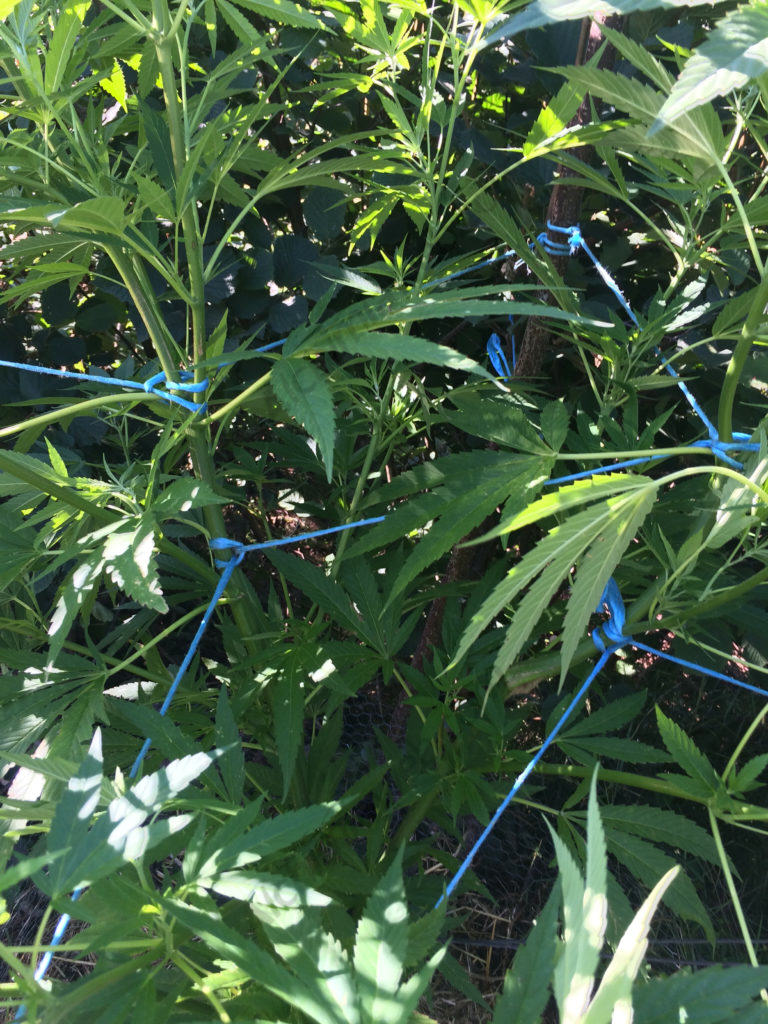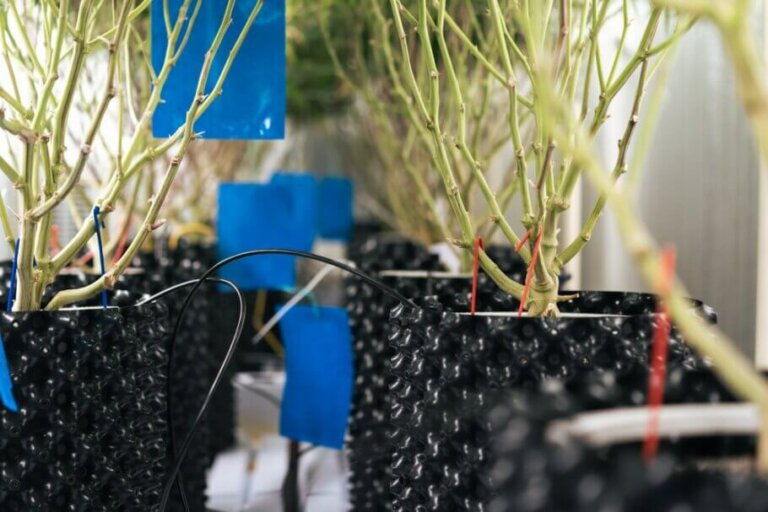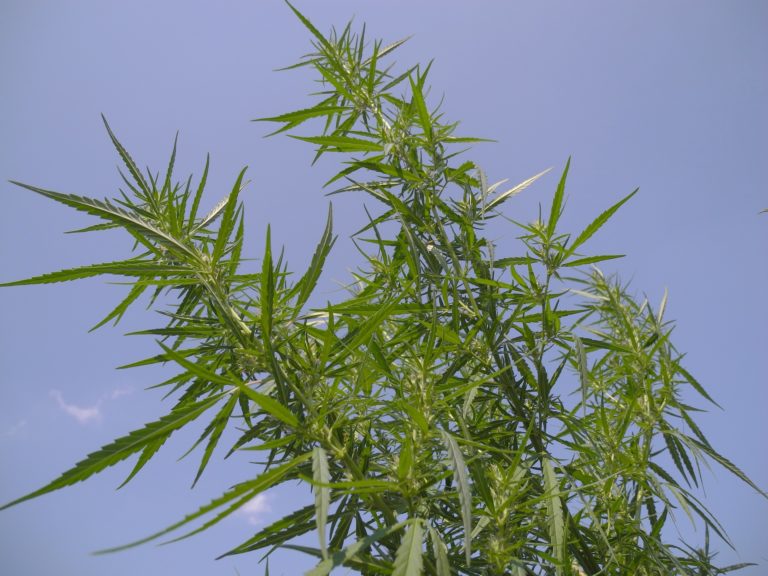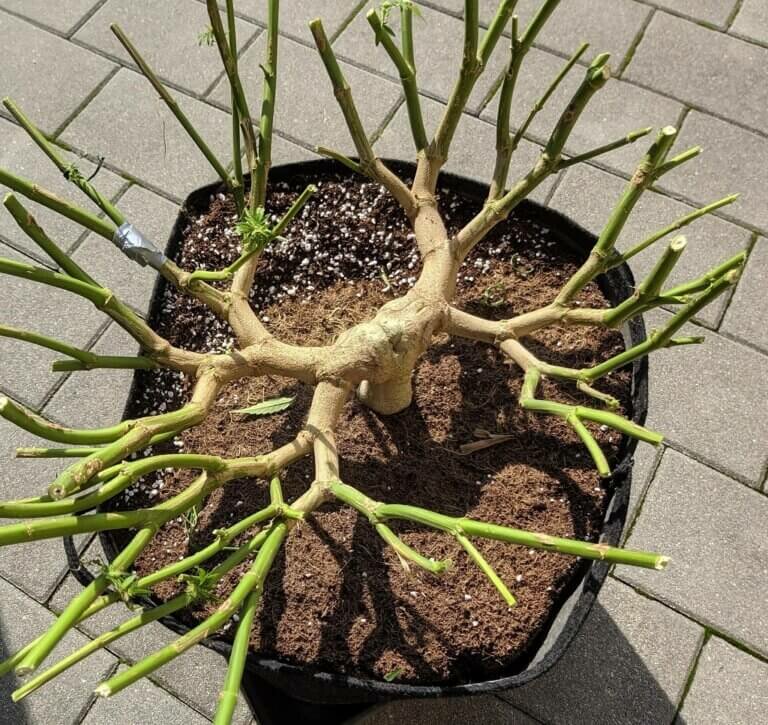Pruning Cannabis Plants
List of contents
In this series of posts, we're taking a comprehensive look at a range of techniques used by growers to shape cannabis plants and facilitate cultivation. Pruning and training are essential tools to control the way our plants grow, whether to restrict height, maximize yields or as a management tool for the indoor cultivator trying to control multiple varieties in one grow space.
When discussing these techniques, we can essentially split them into two basic types of methods:
- Destructive pruning methods that affect some kind of damage to the plant, like pinching out, FIM, super-cropping, etc.
- Non-destructive training techniques designed to minimize damage, such as LST (Low-Stress Training), SCROG, etc.
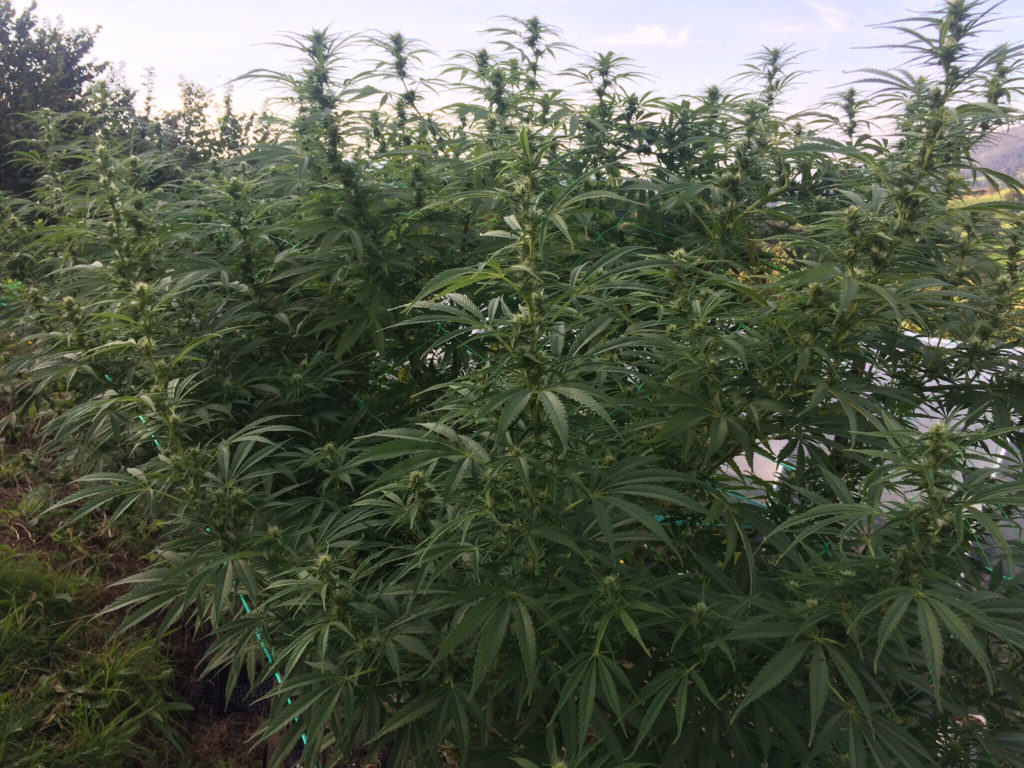
Choosing between pruning or training as a method to control your plants is largely a matter of personal preference. Many gardeners dislike the "destructive" methods, which effectively damage the plant as part of the process, provoking a certain amount of stress and creating potential entry points for infection in the wounds left behind. For this reason, some growers prefer to use non-destructive methods of bending and tying down to control height and shape plants, an approach known as LST or Low-Stress Training, which we examine in detail in another post. In this article, we're going to concentrate on the various techniques of pruning cannabis plants.
There are several different ways to prune, among which can include Apical pruning, FIM, RIB, lollipopping, and others. Alongside the use of these types of pruning, we can also incorporate other techniques such as super-cropping - partially breaking the stem or branches to redirect growing energy and better shape our plants.
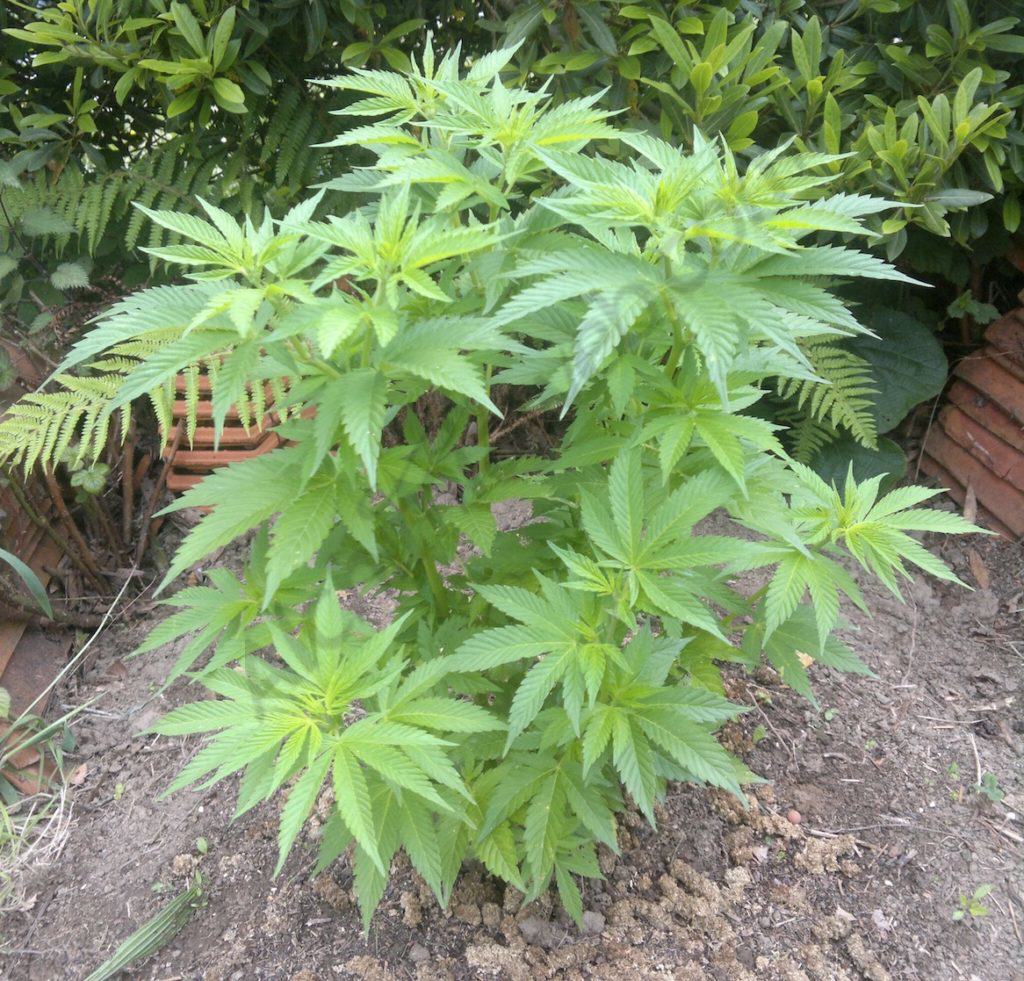
Why prune cannabis plants?
There are many possible reasons for pruning cannabis plants, both indoors and outdoors, and the approach each grower takes will depend on his or her situation. Large-scale Californian outdoor growers use a combination of apical pruning and training to great effect, starting seeds early in the year and repeatedly pinching out growing shoots to produce monster plants inside large wire cages that serve not only as support but also as a trellis to train the plant, spreading the branches to allow better light penetration and encourage further secondary branching. This approach can be time-consuming, in particular, the "cleaning" of the inside of the plants: removing weak spindly growth from the shaded area inside the cage, but growers are rewarded with giant bushes capable of yielding kilos of prime bud with very little leaves or small, under-developed buds.
Conversely, urban and suburban outdoor growers will need to start seeds or clones later on in the season and will often need to employ more drastic pruning and training techniques to keep plants short, compact, and out of view, growing discretely away from prying eyes, whilst often delivering surprisingly high yields in greatly reduced spaces.
Indoor gardeners can also use these techniques, for example, to keep plants from touching the hot lamps, as well as pruning and training plants to encourage them to best fill the grow room and create an even canopy, especially useful when growing two or more different varieties in one space. The ultimate combination of training and pruning is probably SCROG-style cultivation.
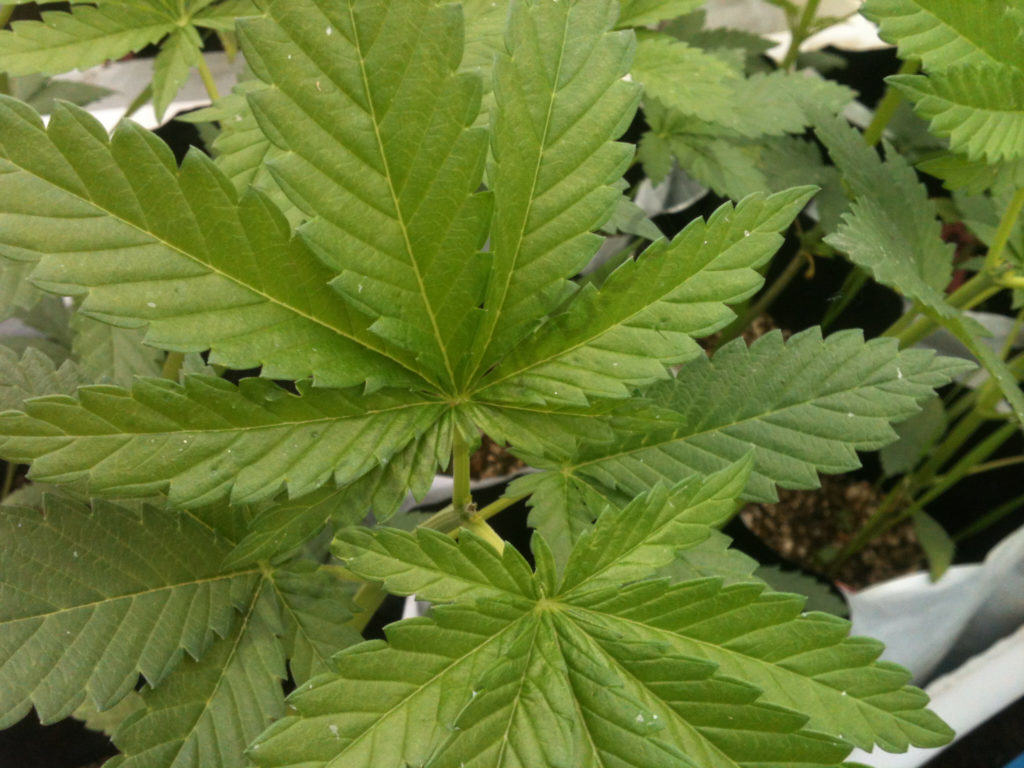
Before beginning to prune the plants it's worth looking at the kind of genetics we want to grow and how they might react to pruning. As a general rule, Sativas and Sativa/Indica hybrids show naturally vigorous and branchy growth and will respond favorably to these methods, recovering quickly and soon growing upwards again after being topped or tied down, making them perfect candidates for practicing these kinds of crop-maximizing techniques. Pure Indica varieties, on the other hand, often lack the same vigorous vegetative growth and are more apical-dominant, tending to form one large central bud rather than many side branches.
Indicas will tend to grow a little slower, naturally staying low and compact without any intervention, indeed many Indica strains react badly to apical pruning and can take a long time to recover, greatly slowing down growth and potentially affecting production. For this reason, you may notice that many of the Indica varieties in our catalog are marked as "suitable for SOG" (Sea of Green) where the aim is to fill the grow space with as many small plants as will fit, reduce veg time and to harvest in the shortest time possible.
When to prune plants?
The decision about when to start pruning or training plants will depend on the stage of the plants' life and the individual situation of each grower. We can start training clones or seedlings from very early on, shaping them to suit our requirements as they develop their first leaves, however, we recommend waiting until the plant is a bit bigger and stronger before beginning any destructive pruning or super cropping, as this can really hold back a plants development if practiced too early on. Wait at least until the second week of vegetative growth before pruning, when the plant has grown a few sets of true leaves.
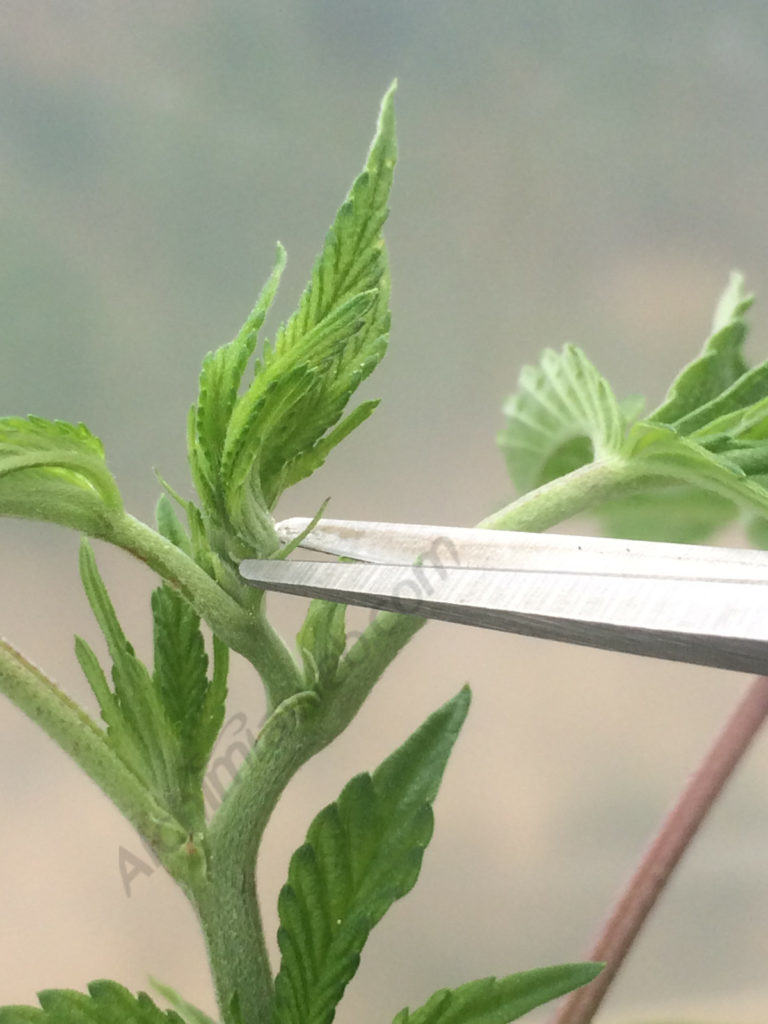
As previously mentioned, if we want large plants outdoors then pruning can take place continually throughout the vegetative period, while if we don't have much space to grow and the idea is to keep plants low and out of view, then we'll germinate later on in the season and use a combination of tying down and pruning to keep them discreet, always remembering to allow room for plants to stretch at the start of flowering, and although we can continue training while the stretch is going on, then any pruning should ideally be stopped around two weeks before the switch to bloom if we don't want to negatively impact on yield, giving plants time to recover from any stress and start growing again from below the pruning cut before they start to flower. Now let's have a closer look at a few of the more popular methods:
Topping, apical pruning, or pinching out
Apical pruning, also sometimes referred to as topping or pinching out, is one of the most familiar pruning techniques to the great majority of indoor and outdoor cultivators of cannabis. It allows us to control the height of the plants in a simple and effective way, by removing the topmost growing tip.
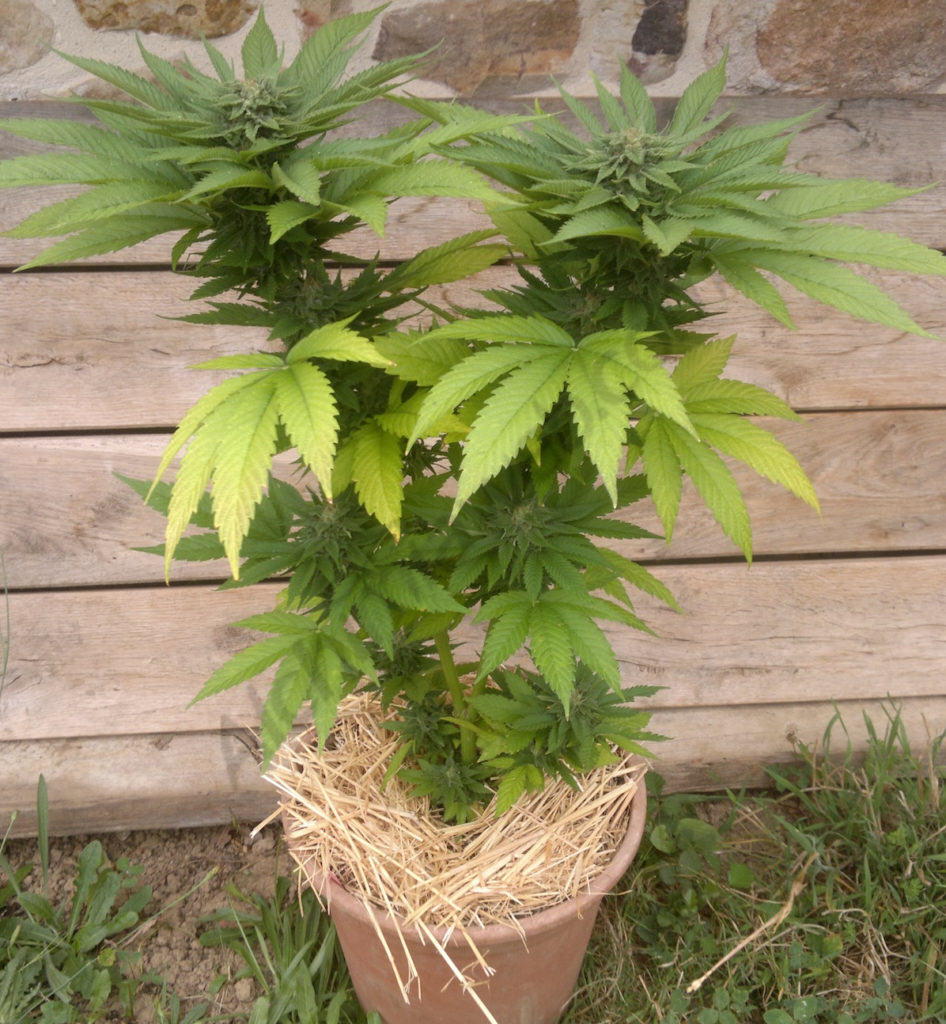
This approach consists of simply cutting the apex or the growing tip of the plant using scissors, knife, cutting blade, cutter, etc., ideally previously sterilized to avoid infections during the operation, although many gardeners simply use clean fingernails to pinch out the tip while others bend it over until it snaps off cleanly. It's important to remember that if we make clean cuts, the plants will suffer less stress, and will recover more quickly from the damage with less chance of getting infected.
The growing tip of the plant is where the main growth hormones, or auxins are concentrated. By cutting off the tip, we force the plant to redistribute hormones to the other parts of the plant, slowing down vertical growth and encouraging stronger growth in the lower branches, which will reach upwards to take the place of the apical tip, forming multiple leaders instead of just one and forming a more bush-like plant. This has the advantage of producing many more useful bud sites and an increase in yield.
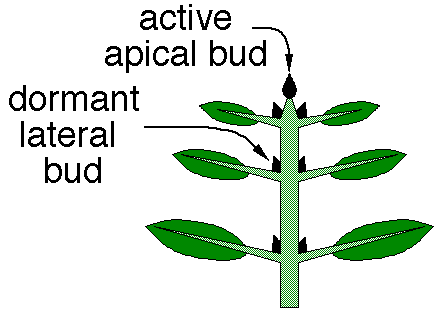
Outdoor growers in particular appreciate this approach as it encourages plants to produce lots of medium-sized flowers rather than one huge bud that could easily fall prey to bud rot due to its large size and density. Cultivators keeping mother plants also use this technique to stimulate more branching to enable them to take lots of healthy cuttings at a time.
FIM (Fuck I Missed)
FIM pruning in cannabis plants was discovered by accident, presumably in a failed attempt at performing apical pruning, hence the name "Fuck, I Missed". As a process, it is very similar to apical pruning, but with a slightly different cut: instead of removing 100% of the growing tip as in apical pruning, with FIM we leave behind around 20% of the tip, which, if performed properly, will provoke the plant to produce multiple shoots from that spot.
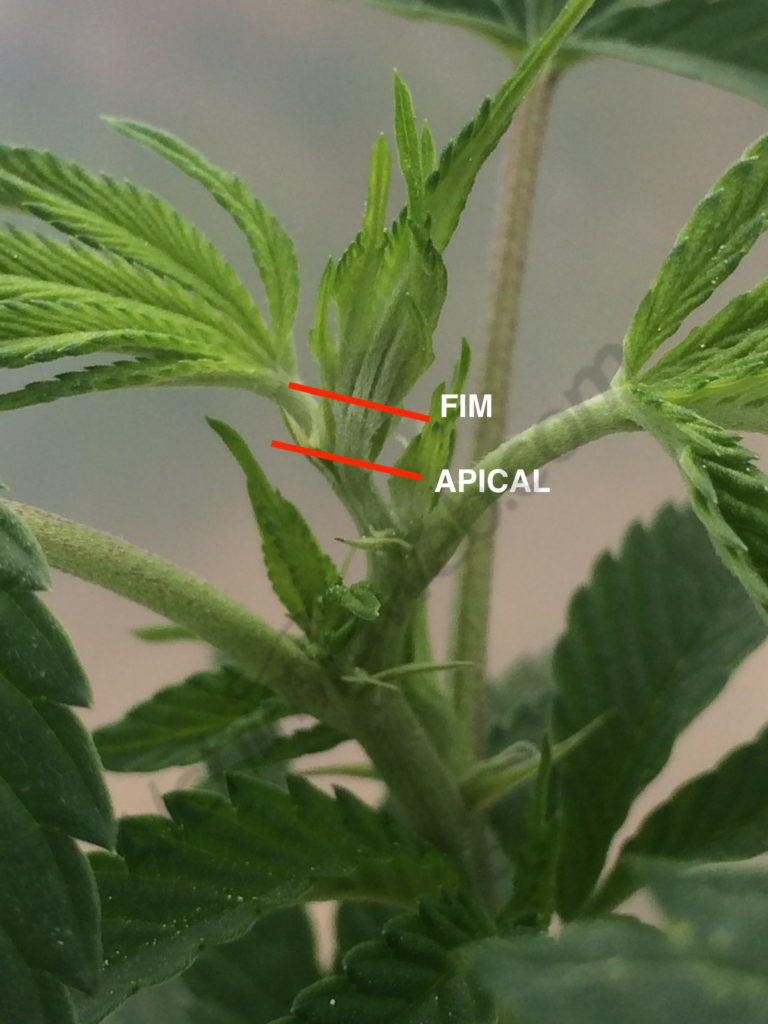
This type of pruning is performed to multiply the main and lateral shoots without having to sacrifice the upper shoots as in the case of apical pruning. This pruning technique can be used both in indoor and outdoor cultivation and also in the case of wanting to make mother plants.
Super-cropping
The most widely-known method of encouraging branching in cannabis plants is by pruning, that is by removing a growing tip, but it's not the only destructive option available. although for those growers unwilling to chop the top off a plant there are other options available, for example, super-cropping.
This technique consists of gently crushing the branch, without breaking it, as we redirect it horizontally in the desired direction to shape the plant. After a few days, the crushed area of the branch will become very much stronger, forming a thick, bulbous callous, and the part of the branch above this point will now grow more vigorously and give a higher yield of buds, also being more open to the light.
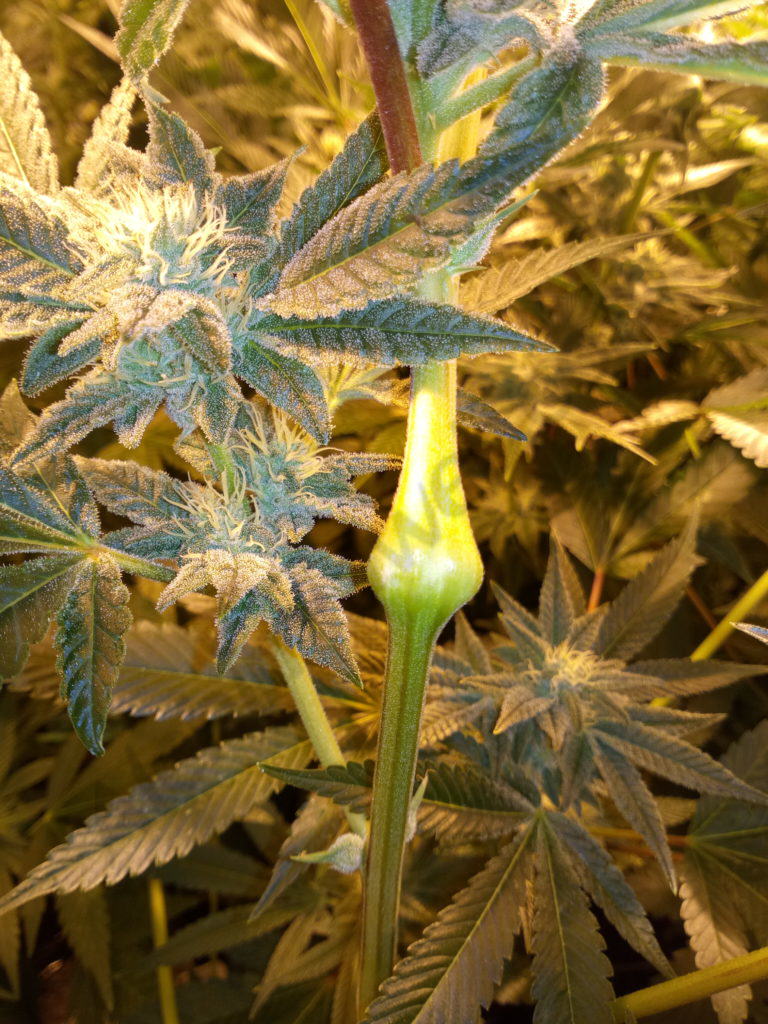
At this point, we can tie the tips to guide the plant and continue to grow horizontally across if we want, instead of upwards. This technique can be repeated when necessary, even during flowering in extreme cases, such as when the main stem has grown too tall and the tip of the bud risks being burned by the lightbulb and we don't have the option of raising it due to lack of headroom.
(RIB) Right I Burnt it
Another, much less well-known destructive technique that also doesn't involve any cutting is RIB, which stands for Right, I Burnt it, and basically consists of using a flame from a cigarette lighter or small blowtorch to lightly singe the buds around the third or fourth week of bloom, which provokes abundant re-flowering and an increase in yield.
This method was most probably discovered by accident when a careless cultivator let his plants grow too close to the lamps early on during flowering, causing the tips of the buds to get burnt with the heat from the bulb. After rectifying the problem, he must have seen how the burnt areas, after recovering from the stress, began to produce abnormal amounts of flowers with very little leaf, eventually yielding much more than the unburnt areas of bud.
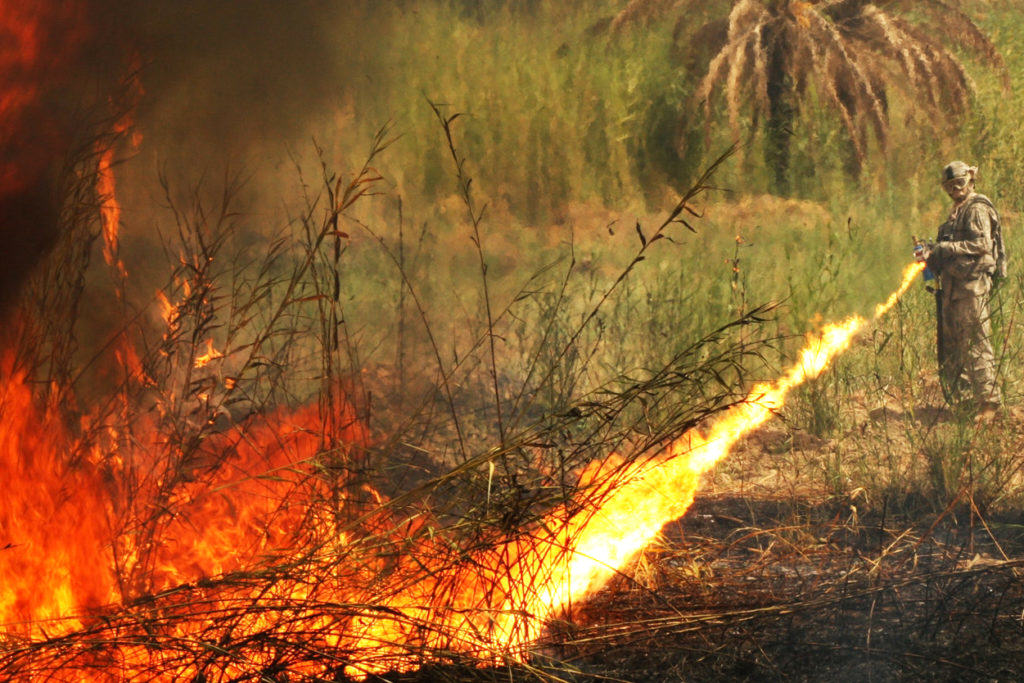
This approach is fairly extreme, it certainly has its disadvantages, and the jury is still out regarding its efficacy, as it does subject plants to a great deal of stress at a crucial time in their life cycle. Using RIB will tend to completely stop a plant's development for a few days as it recovers from the shock, and can delay flowering by up to two weeks, during which time the plant displays classic stress/revegetation symptoms, for example, deformed leaves with one to three fingers.
That said, it's clear that some growers who have experimented with this technique have been very pleased with the results indeed, and while we don't recommend you take a blowtorch to your entire flower room, we do encourage you to experiment and maybe try it on part of a plant to see the effect for yourself. If you're trying to out, always put safety first and be sure to keep the flame away from any flammable materials!
Lollipopping - pruning for plant health
Although this type of pruning is used primarily to reduce the risk of pests and diseases affecting plants rather than to shape and train the structure of the plant, it is highly useful and is widely employed by both indoor and outdoor growers. The technique consists of cleaning out the bottom parts of the plants and removing all the weak lower growth that doesn't receive much light, effectively leaving the stalk and lower branches free of foliage. If left to their own devices, these shaded areas of the plant won't yield much in the way of flowers and may provoke issues by impeding air circulation around the base of the plant, leading to high humidity, cooler temperatures, and a greater incidence of fungal infections or insect infestations.
Pruning away this spindly lower growth helps plants stay healthier by removing the areas where these problems may begin; by increasing airflow to the upper part of the plants, lowering the risk of fungal attack in the main flowering area; and it also helps plants direct their energies towards the more productive upper zone, increasing the eventual yield.
This approach is almost always worth following when growing outdoors, whether to avoid mold problems in humid climates, or to help combat spider mites and other insects that thrive in dry conditions. This practice is often referred to as lollipopping because it leaves individual plants resembling a lollipop in shape, with a clean, stick-like stem below and large round foliage and flowers above, making ventilation, maintenance, foliar application and irrigation a much easier proposition for the gardener.
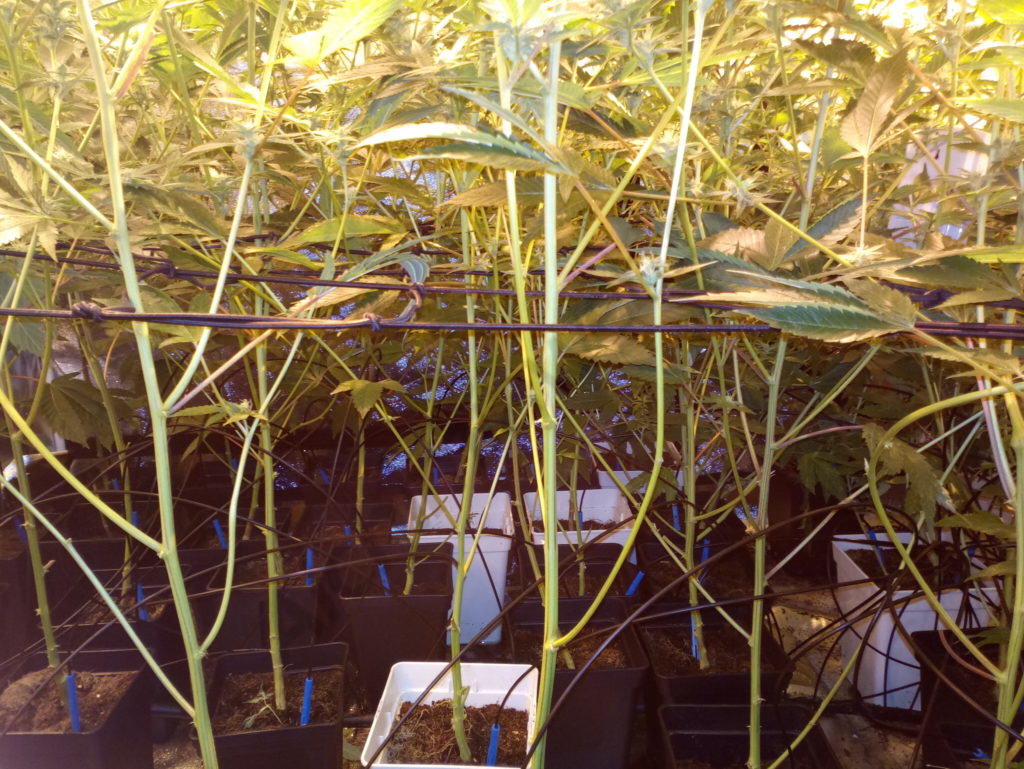
Now that we've looked at the various techniques used to prune cannabis plants, and seen how useful they can be, in our next post we'll be dealing with some of the non-destructive methods of training our plants to optimize the growing space and maximize harvests.
Happy growing!
































































